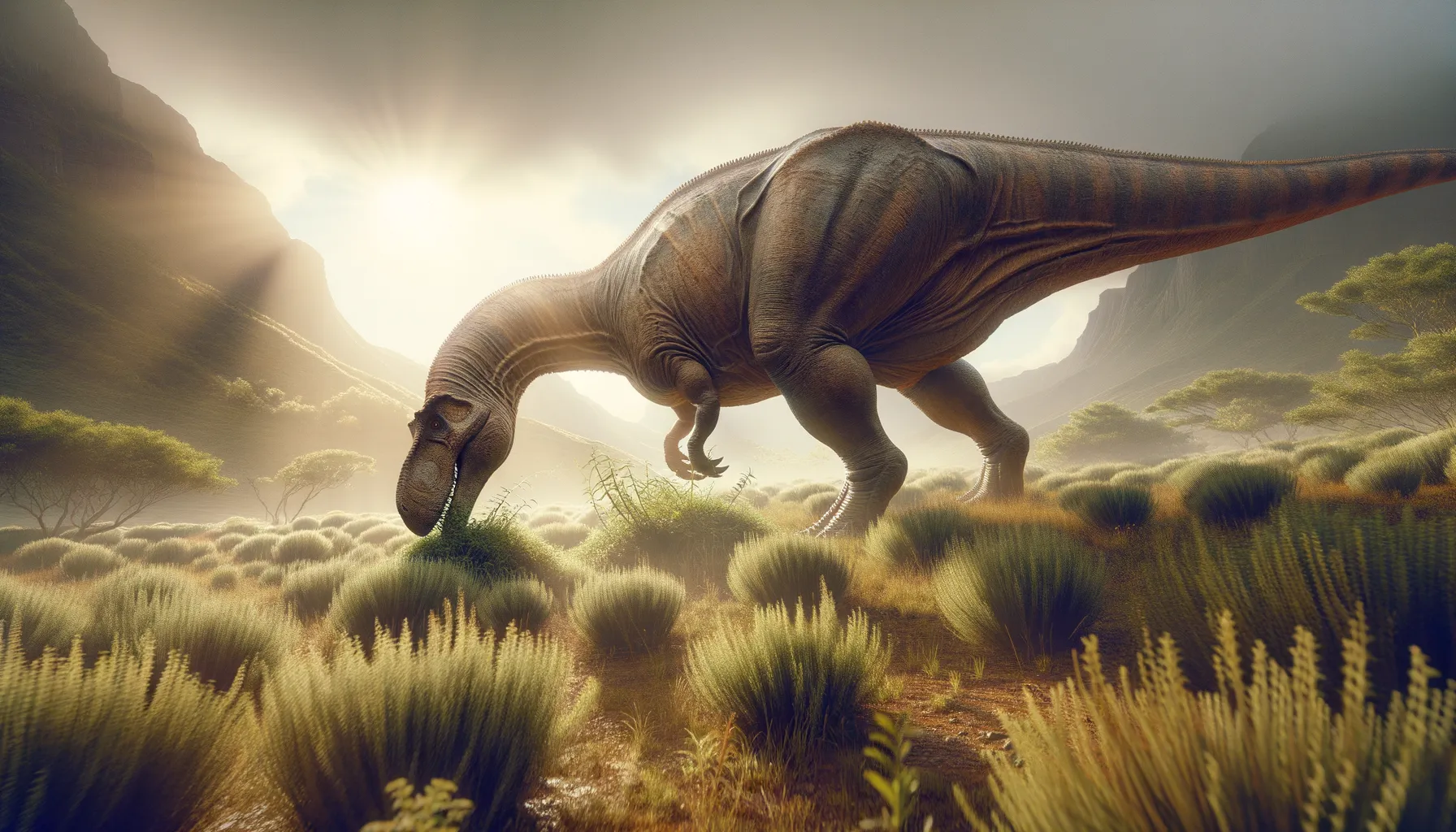
Aardonyx
A transitional titan of the Jurassic world.
Period
Jurassic
Length
Around 20 feet long.
Height
Approximately 6 feet tall at the hip.
Weight
Around 1 ton.
Aardonyx was an early dinosaur from the Jurassic period, bridging the gap between two-legged and four-legged plant-eaters. Its remains discovered in South Africa provide valuable insights into dinosaur evolution. This dinosaur was a herbivore, feeding primarily on low-lying vegetation. Its stout body and thick limbs suggest it was adapted to a life of grazing rather than quick movement. Aardonyx plays a crucial role in understanding the transitionary forms of large plant-eating dinosaurs.
Diet
Aardonyx was a herbivore primarily feeding on plants. It likely grazed on ferns and other low-growing vegetation. This diet suggests it spent a lot of time foraging for food.
Hunting
As a herbivore, Aardonyx did not hunt. Instead, it focused on finding and consuming plant material. Its physical characteristics show adaptations for a life of grazing and browsing.
Environmental challenges
Aardonyx faced threats from larger predators of the Jurassic period. It had to compete with other herbivores for food resources. Changing climates and landscapes posed challenges to its survival. Fossil evidence indicates adaptations that helped it succeed in this challenging environment.
Speed
Relatively slow, suitable for browsing vegetation.
Lifespan
Estimated lifespan of several decades.
First discovery
Discovered in 2009 in South Africa.
Fun Facts
- Aardonyx was a dinosaur that lived about 195 million years ago during the Early Jurassic period.
- This dinosaur's name means 'Earth claw', which refers to its large and powerful claws.
- Aardonyx walked primarily on two legs but is believed to have been able to walk on all fours when needed, making it a bit of a switch-hitter in dinosaur terms.
- It was a herbivore, meaning it only ate plants, and had a long neck to help it reach for higher vegetation.
- Aardonyx fossils were first discovered in South Africa, giving us insights into the early evolution of massive dinosaurs known as sauropods.
- The Aardonyx is an important dinosaur as it is thought to represent an evolutionary link between two-legged and four-legged dinosaurs.
- Despite its massive size, it still had a relatively small head, which is typical for many long-necked dinosaurs.
Growth and Development
Aardonyx exhibited slow, steady growth over a long lifespan. Juveniles likely must fend for themselves, learning to adapt to their surroundings quickly. Discoveries of various growth stages provide insights into its development phases. This dinosaur's growth patterns help us understand the evolutionary pathways of large herbivores.
Habitat
Aardonyx lived in what is now known as South Africa, which was a rich floodplain. This environment supported lush vegetation that suited its herbivorous diet. The region experienced seasonal changes, affecting its food availability. Proximity to water sources indicated reliance on rivers and lakes for hydration.
Interaction with other species
It shared its habitat with predators and other herbivores, necessitating cautious behavior. Fossil evidence suggests a coexistence with marine and terrestrial life forms. The diverse ecosystem allowed it to play a specific ecological role. Interactions with predators likely shaped its social and physical behaviors.
Natural lifespan
Aardonyx had a natural lifespan extending several decades.
Reproduction
Aardonyx reproduced by laying eggs, like most dinosaurs. Nesting sites have not been extensively documented for this species. It probably exhibited basic parental care to protect eggs and young. Incubation periods likely varied depending on environmental conditions.
Social behaviour
Aardonyx may have shown some form of herd behavior for protection. Its transitional nature suggests changes in social structures to adapt. Fossil findings hint at possible group movement patterns. Understanding its social dynamics provides insights into Jurassic life.
Fossil locations
The primary fossils of Aardonyx have been found in South Africa. Discovery sites provide insight into the ecosystem of the Jurassic area. These remains help us understand the geographic extent of its habitat. Fossils reveal adaptive strategies crucial in its time.
